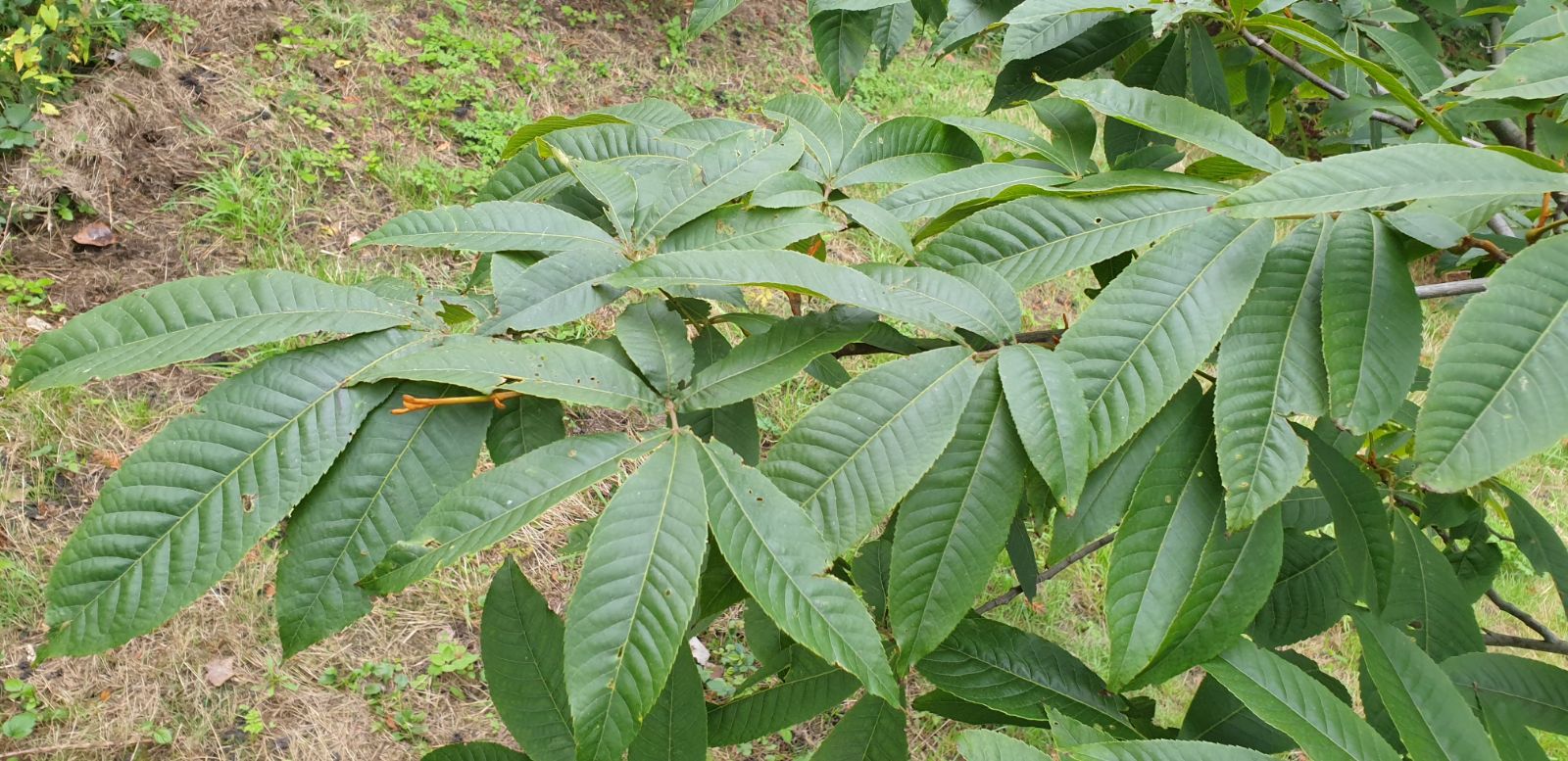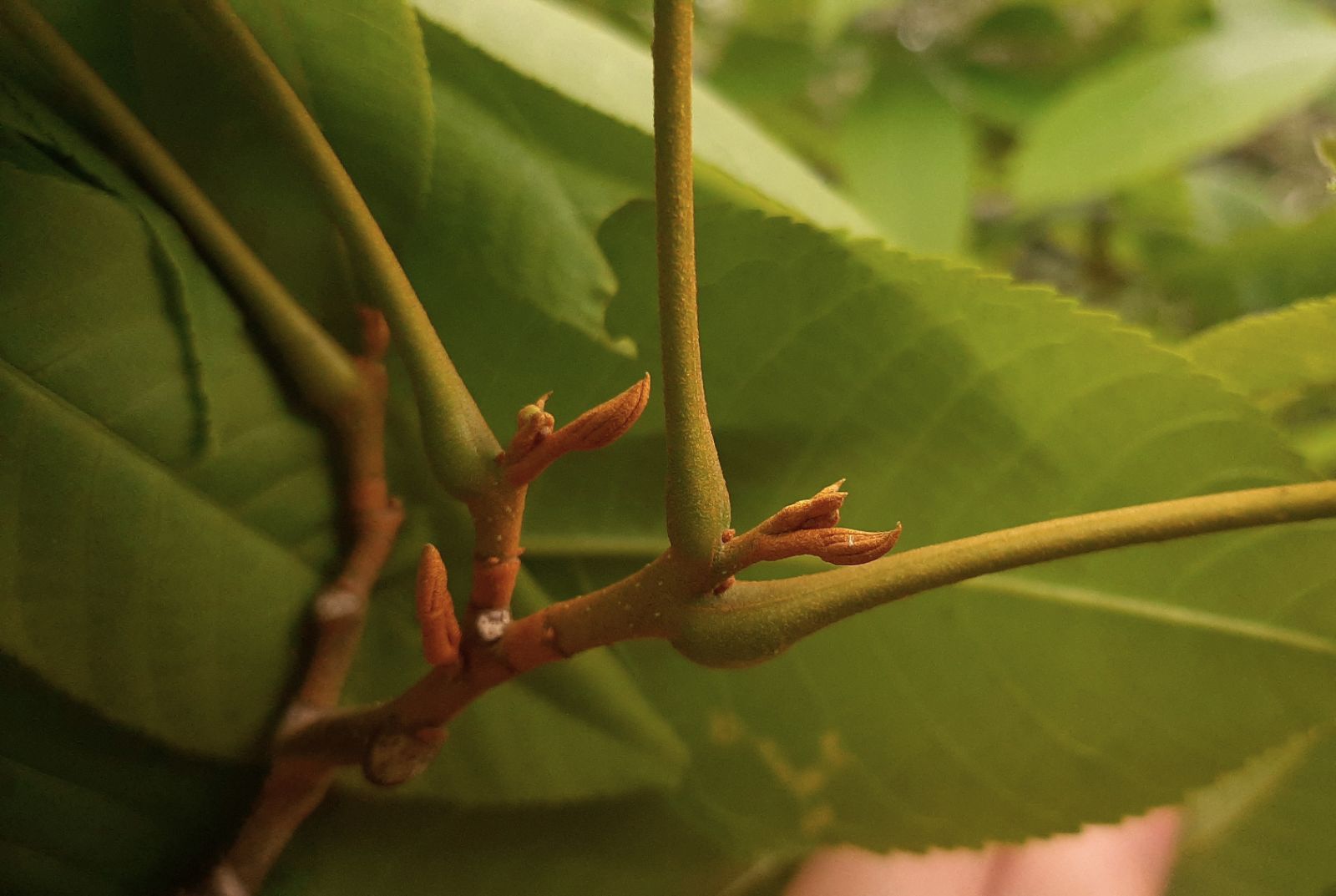Carya hunanensis
Sponsor
Kindly sponsored by
a member of the International Dendrology Society
Credits
John Grimshaw & Dan Crowley (2021)
Recommended citation
Grimshaw, J. & Crowley, D. (2021), 'Carya hunanensis' from the website Trees and Shrubs Online (treesandshrubsonline.
Genus
Common Names
- Hunan Hickory
Trees to 14 m tall in the wild. Branchlets slender, terminal buds naked, golden brown. Leaves deciduous, imparipinnate, 20–30 cm long; petiole 4–8 cm, glabrous; rachis pubescent; leaflets (5–) 7–9, lateral leaflets sessile, terminal leaflet with petiolule 0.5 cm. Leaflets elliptic or elliptic-lanceolate, (6–)11–18 × (2–)3.5–7 cm with abundant golden peltate scales abaxially, largely glabrous except for hairs along midvein and in axils of secondary veins abaxially, bases cuneate, apices acuminate. Staminate spikes unknown. Husk winged to middle; shell with 4 faint, longitudinal ridges, 1.5–2.5 mm thick, 4-chambered at base, lacunae absent. Nuts 3–3.7 × 2.3–3 cm. (Lu et al. 1999).
Distribution China Guangxi, Guizhou, Hunan
Habitat Forests in valleys and along riverbanks, between 900 and 1000 m asl.
Conservation status Not evaluated (NE)
This is a very poorly known species, resembling C. cathayensis but differing in its fruit characters: the nuts are distinctly obovate, larger (3–3.5 × 2.4–2.7 cm), have thicker shells (1.5–2.5 mm), and have husks which are winged only to the middle. Grauke (2003) disputes differences in leaflet number reported by Lu et al. (1999): as seen in cultivation both have 7–9 leaflets. The nuts are eaten, pressed for oil and used as medicine (Lu et al. 1999; Grauke 2003). A specimen apparently matching this description, and obtained from Arboretum Waasland under this name in 2001, was located in the grounds of Buckingham Palace in September 2021 by Owen Johnson (pers. comm. 2021). It requires confirmation from the fruits, but this may take some time. So far it has grown steadily, having reached 7 m tall and 9 cm dbh (Tree Register).



